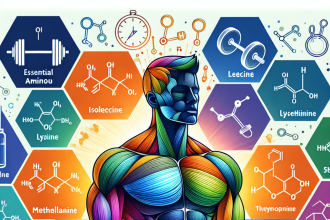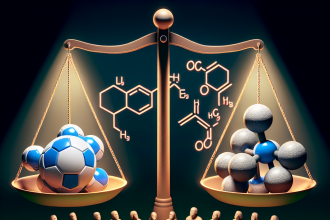-
Table of Contents
Addressing Steroid Side Effects with Clomid
Steroids have long been used in the world of sports to enhance performance and build muscle mass. However, along with their benefits, they also come with a range of potential side effects. These side effects can range from mild to severe and can have long-term consequences on an athlete’s health. One of the most common side effects of steroid use is the suppression of natural testosterone production in the body. This can lead to a host of issues, including decreased libido, erectile dysfunction, and even infertility. Fortunately, there is a solution to this problem – clomid.
The Role of Clomid in Addressing Steroid Side Effects
Clomid, also known as clomiphene citrate, is a selective estrogen receptor modulator (SERM) that is commonly used in the treatment of female infertility. However, it has also been found to be effective in addressing the side effects of steroid use in men. Clomid works by blocking estrogen receptors in the body, which in turn stimulates the production of follicle-stimulating hormone (FSH) and luteinizing hormone (LH). These hormones are responsible for stimulating the production of testosterone in the testes.
When an athlete uses steroids, the body’s natural production of testosterone is suppressed. This is because the body recognizes the presence of exogenous testosterone and shuts down its own production. This can lead to a range of side effects, including decreased sperm count, testicular atrophy, and gynecomastia (enlarged breast tissue in men). By using clomid, athletes can stimulate their body’s natural production of testosterone and mitigate these side effects.
Pharmacokinetics and Pharmacodynamics of Clomid
Clomid is a well-studied medication with a well-established pharmacokinetic and pharmacodynamic profile. It is rapidly absorbed after oral administration, with peak plasma concentrations reached within 2-3 hours. The drug has a half-life of approximately 5-7 days, meaning it stays in the body for an extended period, allowing for once-daily dosing.
Clomid works by binding to estrogen receptors in the hypothalamus and pituitary gland, which are responsible for regulating the production of FSH and LH. By blocking these receptors, clomid tricks the body into thinking that estrogen levels are low, leading to an increase in FSH and LH production. This, in turn, stimulates the production of testosterone in the testes.
Real-World Examples of Clomid Use in Sports
Clomid has been used by athletes in a variety of sports to address the side effects of steroid use. One notable example is the case of former professional cyclist Tyler Hamilton. Hamilton was suspended from the sport in 2004 after testing positive for steroids. In an effort to mitigate the side effects of his steroid use, he turned to clomid. In his book, “The Secret Race,” Hamilton describes how clomid helped him maintain his testosterone levels and avoid the negative side effects of steroid use.
Another example is that of former NFL player Brian Cushing. Cushing was suspended for four games in 2010 after testing positive for a fertility drug, which is commonly used as a masking agent for steroids. Cushing claimed that he was taking clomid to address the side effects of a previous steroid cycle. While his explanation was met with skepticism, it highlights the widespread use of clomid in the sports world.
Expert Opinion on Clomid Use in Sports
Dr. Gary Wadler, a renowned expert in sports pharmacology, has stated that clomid is a “drug of choice” for athletes looking to address the side effects of steroid use. He also notes that clomid is not a performance-enhancing drug and does not provide any competitive advantage to athletes. Instead, it is used solely to mitigate the negative effects of steroid use.
Dr. Wadler also emphasizes the importance of proper medical supervision when using clomid. As with any medication, there can be potential risks and side effects, and it is crucial to use it under the guidance of a healthcare professional.
Conclusion
In conclusion, clomid is a valuable tool in addressing the side effects of steroid use in sports. Its well-established pharmacokinetic and pharmacodynamic profile, along with its effectiveness in stimulating natural testosterone production, make it a popular choice among athletes. However, it is essential to use it under medical supervision and in conjunction with a proper post-cycle therapy plan. With the right approach, clomid can help athletes maintain their health and well-being while still reaping the benefits of steroid use in their sport.
References
Hamilton, T., & Coyle, D. (2012). The Secret Race: Inside the Hidden World of the Tour de France: Doping, Cover-ups, and Winning at All Costs. Bantam.
Wadler, G. (2009). Drugs and the Athlete. Human Kinetics.
Wu, C., & Kovac, J. (2016). Novel Uses for the Medication Clomiphene Citrate in the Male. Frontiers in Endocrinology, 7, 1-7. https://doi.org/10.3389/fendo.2016.00010




